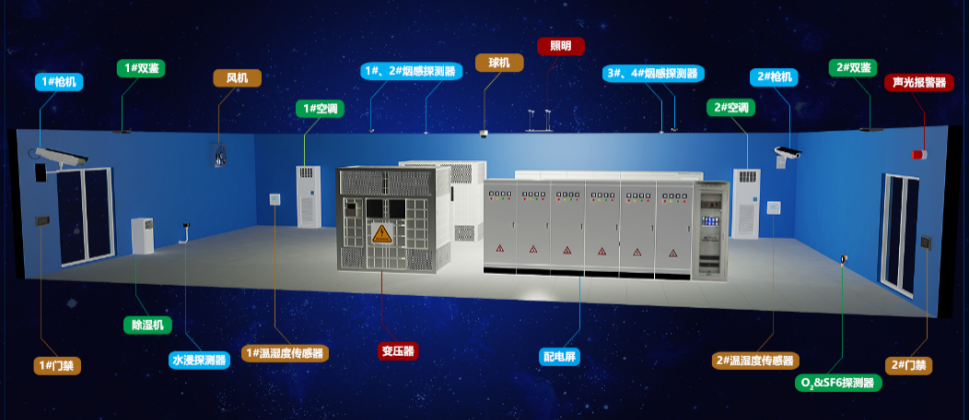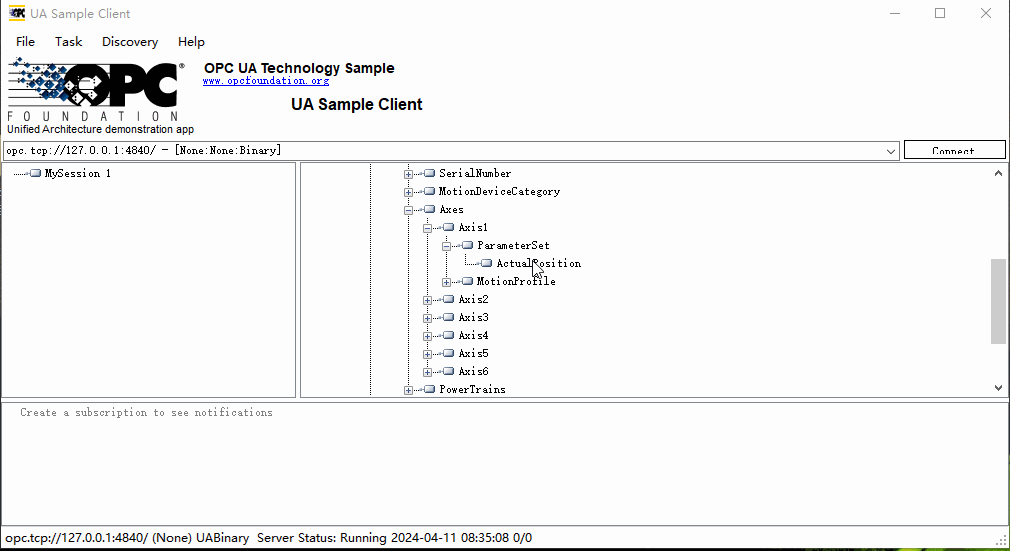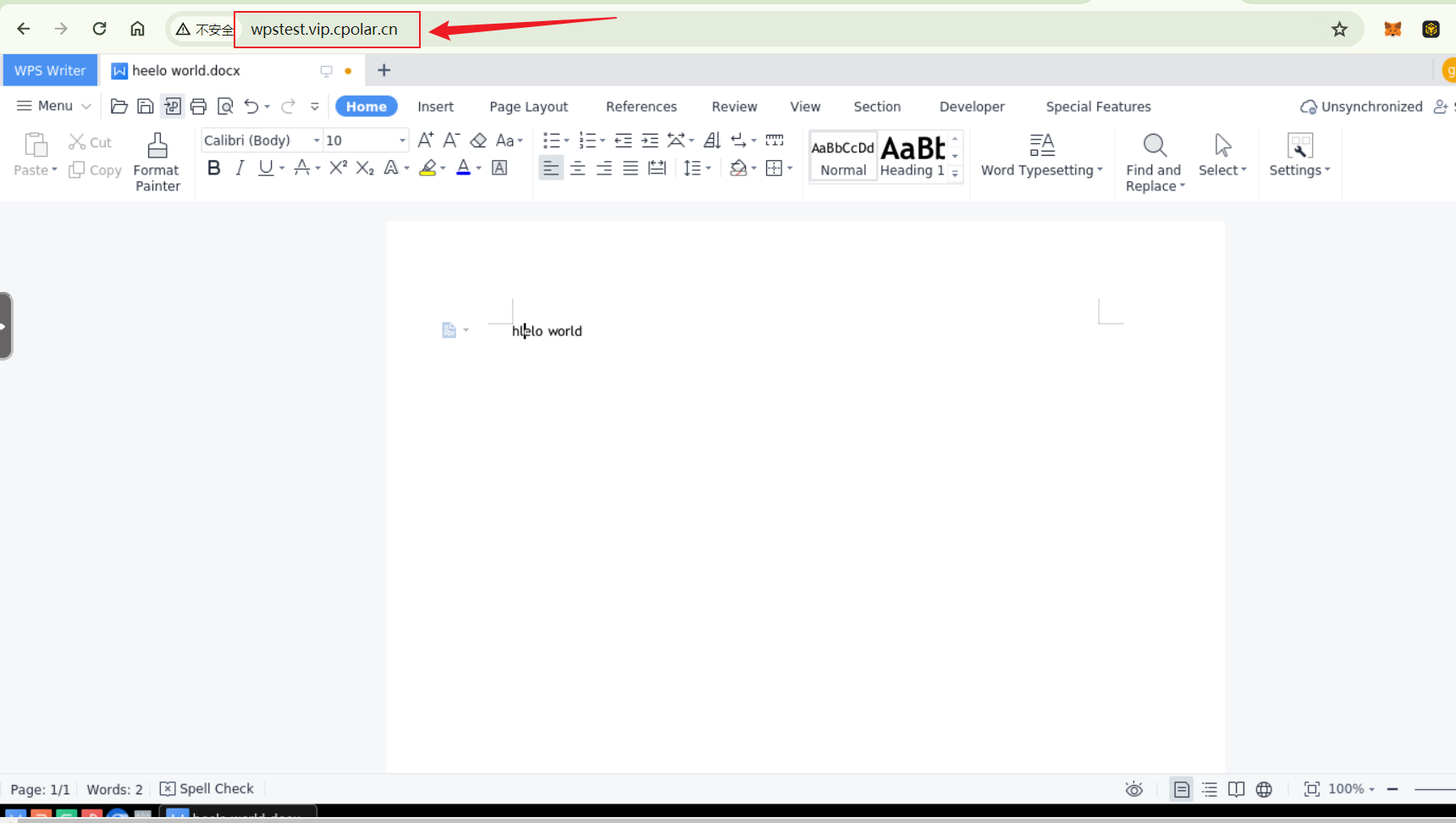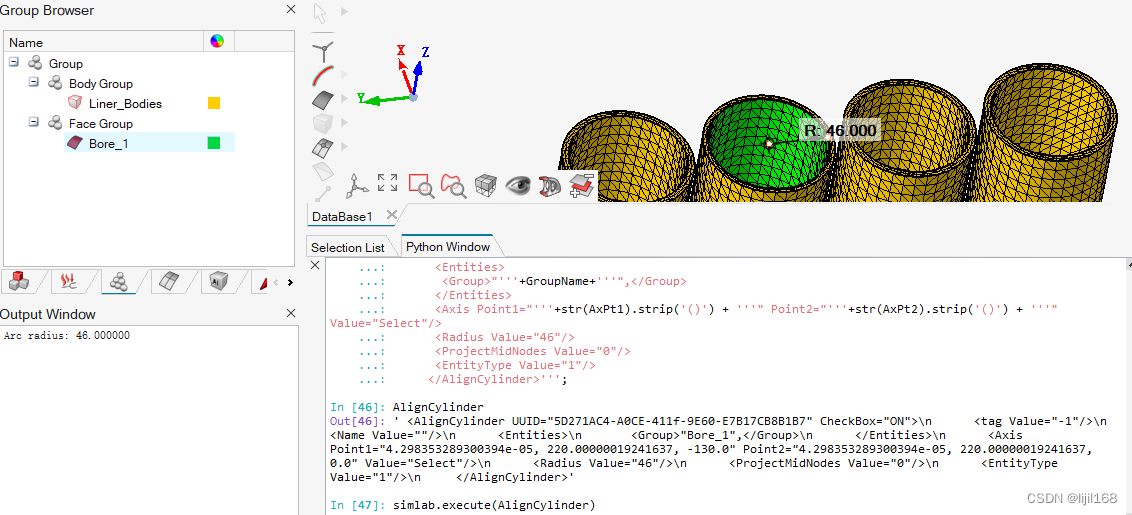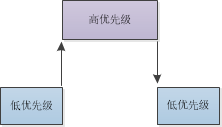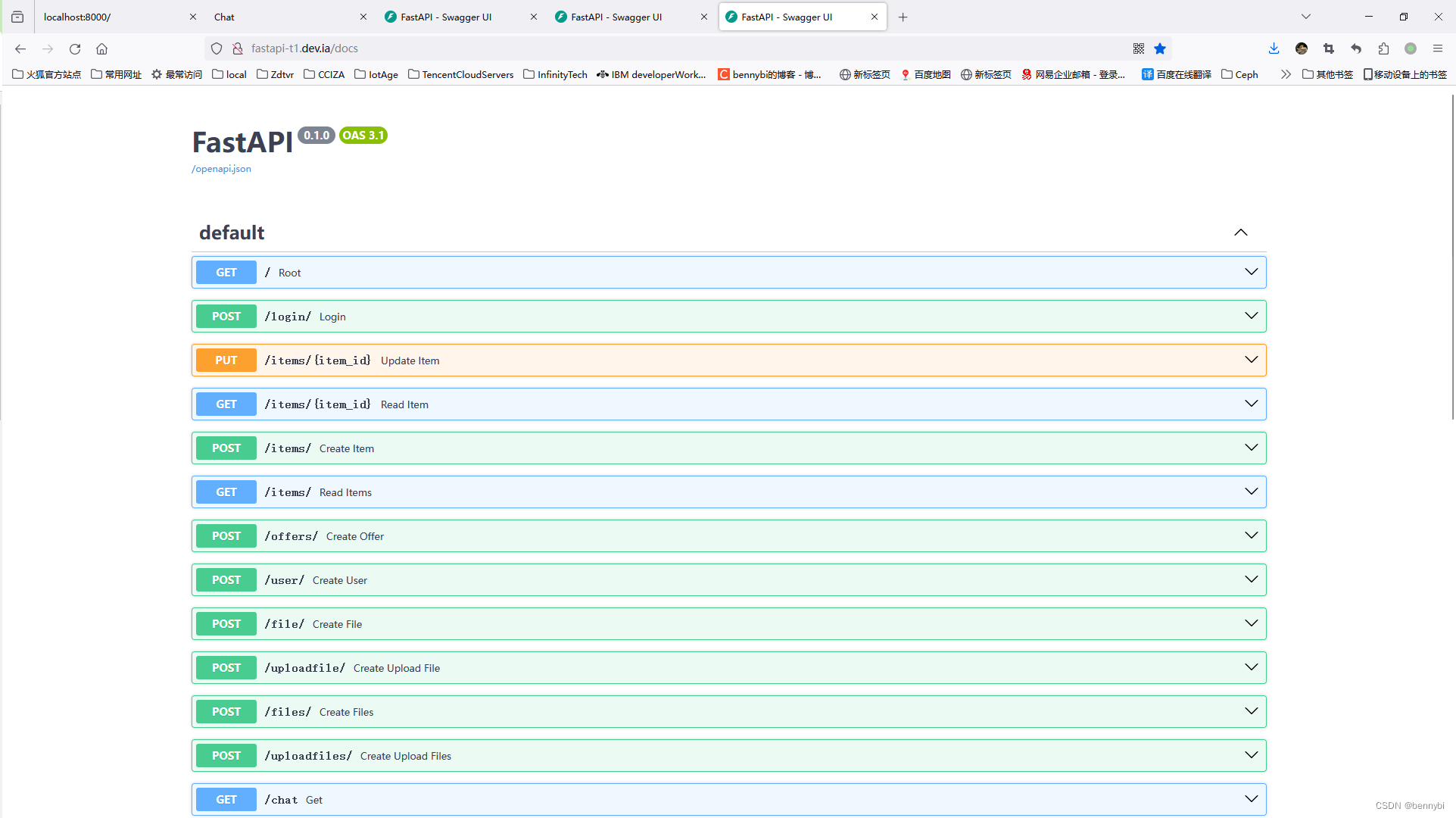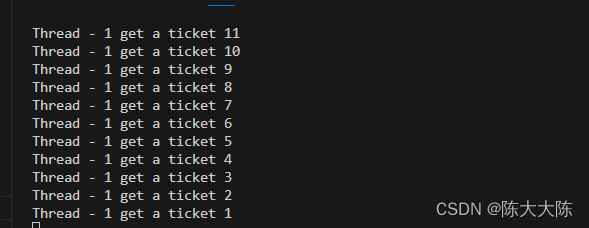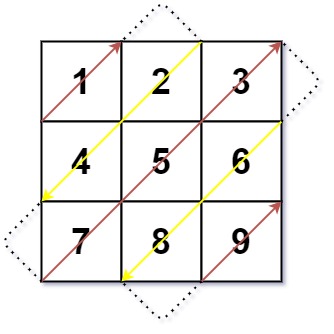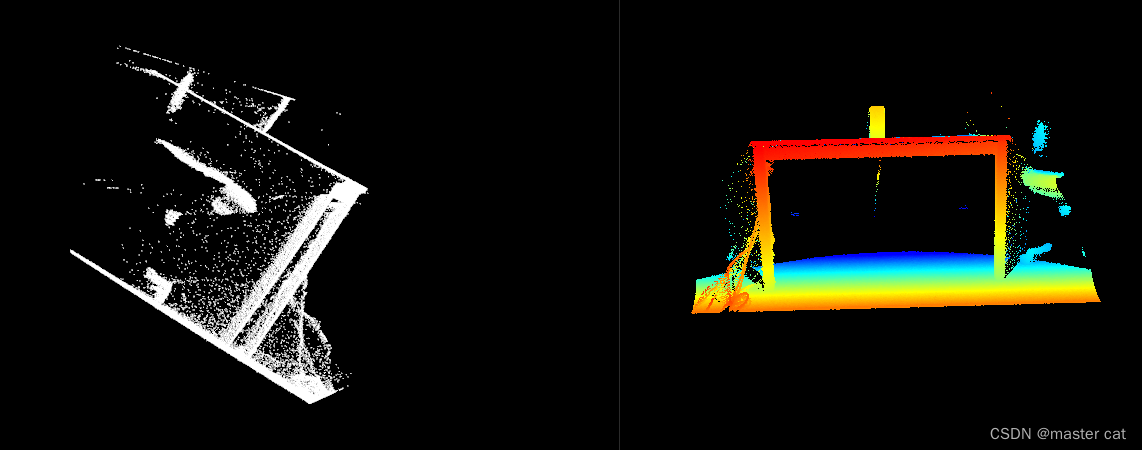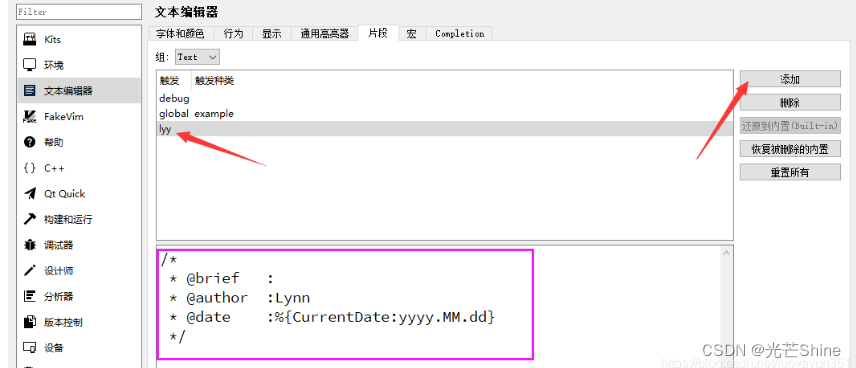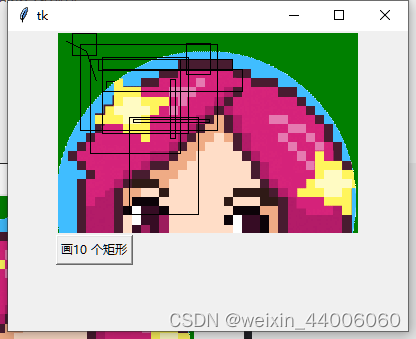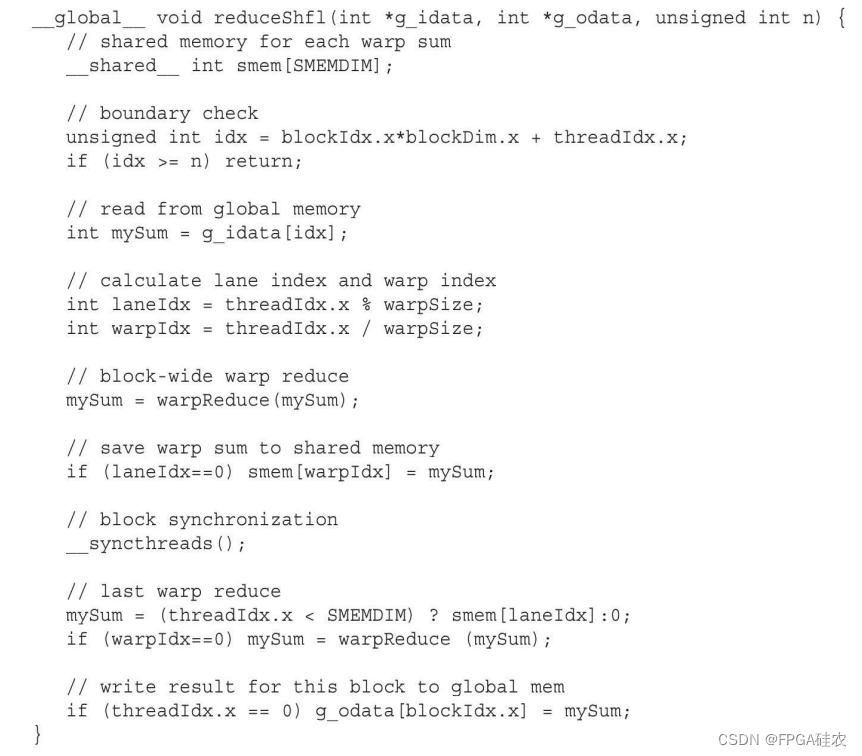 前言:前面几篇文章我们详细介绍了顺序表,以及基于顺序表来实现的通讯录。今天我们连介绍一下链表的下一个结构链表。那么链表和顺序表究竟有什么区别呢?他们两个的优缺点分别是什么。今天这篇文章就带大家了解一下链表。
前言:前面几篇文章我们详细介绍了顺序表,以及基于顺序表来实现的通讯录。今天我们连介绍一下链表的下一个结构链表。那么链表和顺序表究竟有什么区别呢?他们两个的优缺点分别是什么。今天这篇文章就带大家了解一下链表。
目录
一.链表的概念
二.链表的分类
三.链表的实现
1.尾插链表
2.尾删链表
3.头插链表
4.头删链表
5.查找节点
6.打印链表
7.指定位置后插入链表
8.删除指定位置链表
三.链表所有代码
四.结言
一.链表的概念
概念:链表是一种物理存储结构上非连续、非顺序的存储结构,数据元素的逻辑顺序是通过链表中的指针链接次序实现的 。
首先我们先构造一个链表的基本结构:
typedef int ListType;
typedef struct List
{
ListType x;
struct List* next;
}List;这里我们x存放我们需要储存的数据,next指针指向下一个数据节点的地址。
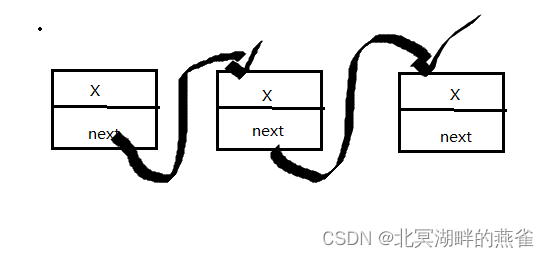
大概就是这样一个形态。

相当于一个火车的模型一节连着一节,这样就不用担心找不到下一节车厢了。
注意:
1.链式结构在逻辑上来讲是连续的,但是在物理结构上不一定连续。
2.现时结构上的内存都是从堆上申请过来的。
3.从堆上申请的空间,是按照一定的策略分配的可能连续也可能不连续。
二.链表的分类
从结构上来讲链表分为:
1.单向或双向

2. 带头或不带头

3.循环或非循环

但是我们实际应用中最常用到的还是:
无头单向非循环链表

有头双向循环链表

1. 无头单向非循环链表:结构简单,一般不会单独用来存数据。实际中更多是作为其他数据结
构的子结构,如哈希桶、图的邻接表等等。
2. 带头双向循环链表:结构最复杂,一般用在单独存储数据。实际中使用的链表数据结构,都
是带头双向循环链表。
三.链表的实现
1.尾插链表
这里由于许多函数都要用到创建内容,所以我们把创建空间分装成一个函数以便后续的操作。
List* BuyMemory(List* ls, ListType x)
{
List* tem = (List*)malloc(sizeof(List));
if (tem == NULL)
{
perror(malloc);
return;
}
tem->val = x;
tem->next = NULL;
return tem;
}接下来是尾插的内容:
void ListBackPush(List** ls, ListType x)
{
List*newnext=BuyMemory(*ls,x);
if (*ls == NULL)
{
*ls = newnext;
(*ls)->next = NULL;
}
else
{
List* pcur = *ls;
while (pcur->next)
{
pcur = pcur->next;
}
pcur->next = newnext;
}
}}2.尾删链表
void ListBackPop(List** ls)
{
assert(*ls);
if ((*ls)->next == NULL)
{
*ls = NULL;
return;
}
List* pcur = *ls;
while (pcur->next->next)
{
pcur = pcur->next;
}
pcur->next = NULL;
free(pcur->next);
}尾删我们只需要找到下一个节点为空的节点然后将他free掉就可以实现我们的尾删操作。
3.头插链表
void ListFrontPush(List** ls, ListType x)
{
List* newnext = BuyMemory(*ls, x);
newnext->next = (*ls);
(*ls) = newnext;
}这里我们需要注意的是 newnext->next = (*ls) (*ls) = newnext这两句代码的位置不能改变否则就找不到(*ls)的下一个节点。
4.头删链表
void ListFrontPop(List** ls)
{
assert(*ls);
List* pcur = *ls;
(*ls) = pcur->next;
free(pcur);
pcur = NULL;
}与头插链表一样需要注意的是链表之间的前后关系,插入之前要弄清楚每个节点的后节点于前节点有什么改变即可。
5.查找节点
List* ListFind(List** ls, ListType x)
{
assert(*ls);
List* pcur = *ls;
int count = 1;
while (pcur->val != x)
{
pcur = pcur->next;
count++;
}
if (pcur)
{
prinft("找到了\n");
return pcur;
}
else
{
printf("找不到\n");
return 0;
}
}遍历链表查找所寻找节点的val,找到后返回该节点的地址。 如果找不到则返回0。
6.打印链表
void ListPrint(List** ls)
{
assert(*ls);
List* pcur = *ls;
while (pcur)
{
printf("%d->", pcur->val);
pcur = pcur->next;
}
}我们所需要做的就是遍历链表并打印。
7.指定位置后插入链表
void ListRandomPush(List** ls, ListType x, List* flag)
{
assert(ls);
assert(*ls);
List* newnext = BuyMemory(*ls, x);
List* pcur = *ls;
while (pcur != flag)
{
pcur = pcur->next;
}
newnext->next = pcur->next;
pcur->next = newnext;
}同样需要注意的是每个节点之间的关系,要注意 newnext->next = pcur->next; pcur->next = newnext位置不可以改变否则会找不到pcur的next。
8.删除指定位置链表
void ListRandomPop(List** ls, List* flag)
{
assert(ls);
assert(*ls);
List* pcur = *ls;
while (pcur->next != flag)
{
pcur = pcur->next;
}
List* prev = pcur->next;
pcur->next = pcur->next->next;
free(prev);
prev = NULL;
}我们需要注意各个节点之间的关系,处理好他们的链接关系就可以了。
还有许多可以实现的操作但实现方法大都大同小异,以上的代码就可以解决大部分的实际问题,大家感兴趣的可以自己去写一下其他的操作。
三.链表所有代码
List.h
#pragma once
#include<stdio.h>
#include<assert.h>
#include<stdlib.h>
typedef int ListType;
typedef struct List
{
ListType val;
struct List* next;
}List;
void ListBackPush(List** ls,ListType x);
void ListBackPop(List** ls);
void ListFrontPush(List** ls, ListType x);
void ListFrontPop(List** ls);
List* ListFind(List** ls, ListType x);
void ListRandomPush(List** ls, ListType x,List*flag);
void ListRandomPop(List** ls, List* flag);
void ListPrint(List** ls);
List.c
nclude"List.h"
List* BuyMemory(List* ls, ListType x)
{
List* tem = (List*)malloc(sizeof(List));
if (tem == NULL)
{
perror(malloc);
return;
}
tem->val = x;
tem->next = NULL;
return tem;
}
void ListBackPush(List** ls, ListType x)
{
List*newnext=BuyMemory(*ls,x);
if (*ls == NULL)
{
*ls = newnext;
(*ls)->next = NULL;
}
else
{
List* pcur = *ls;
while (pcur->next)
{
pcur = pcur->next;
}
pcur->next = newnext;
}
}
void ListBackPop(List** ls)
{
assert(*ls);
if ((*ls)->next == NULL)
{
*ls = NULL;
return;
}
List* pcur = *ls;
while (pcur->next->next)
{
pcur = pcur->next;
}
pcur->next = NULL;
free(pcur->next);
}
void ListFrontPush(List** ls, ListType x)
{
List* newnext = BuyMemory(*ls, x);
newnext->next = (*ls);
(*ls) = newnext;
}
void ListFrontPop(List** ls)
{
assert(*ls);
List* pcur = *ls;
(*ls) = pcur->next;
free(pcur);
pcur = NULL;
}
List* ListFind(List** ls, ListType x)
{
assert(*ls);
List* pcur = *ls;
int count = 1;
while (pcur->val != x)
{
pcur = pcur->next;
count++;
}
if (pcur)
{
printf("找到了\n");
return pcur;
}
else
{
printf("找不到\n");
return 0;
}
}
void ListPrint(List** ls)
{
assert(*ls);
List* pcur = *ls;
while (pcur)
{
printf("%d->", pcur->val);
pcur = pcur->next;
}
}
void ListRandomPush(List** ls, ListType x, List* flag)
{
assert(ls);
assert(*ls);
List* newnext = BuyMemory(*ls, x);
List* pcur = *ls;
while (pcur != flag)
{
pcur = pcur->next;
}
newnext->next = pcur->next;
pcur->next = newnext;
}
void ListRandomPop(List** ls, List* flag)
{
assert(ls);
assert(*ls);
List* pcur = *ls;
while (pcur->next != flag)
{
pcur = pcur->next;
}
List* prev = pcur->next;
pcur->next = pcur->next->next;
free(prev);
prev = NULL;
}
text.c
#include"List.h"
void test01()
{
List* ls = NULL;
ListBackPush(&ls, 1);
ListBackPop(&ls);
ListFrontPush(&ls, 1);
ListBackPush(&ls, 2);
ListBackPush(&ls, 3);
ListBackPush(&ls, 4);
List* ret = ListFind(&ls, 2);
ListRandomPush(&ls, 100, ret);
List* ret1 = ListFind(&ls, 100);
ListRandomPop(&ls, ret1);
ListPrint(&ls);
//ListFrontPop(&ls);
}
int main()
{
test01();
return 0;
}四.结言
以上就是链表操作的所有内容了,我们实现的只是无头单向非循环链表,但是其他链表的实现操作也是万变不离其中的只需要处理好各个节点之间的关系就问题就迎刃而解了。
还有请喜欢的朋友们一键三连哦!
谢谢大家了!!


